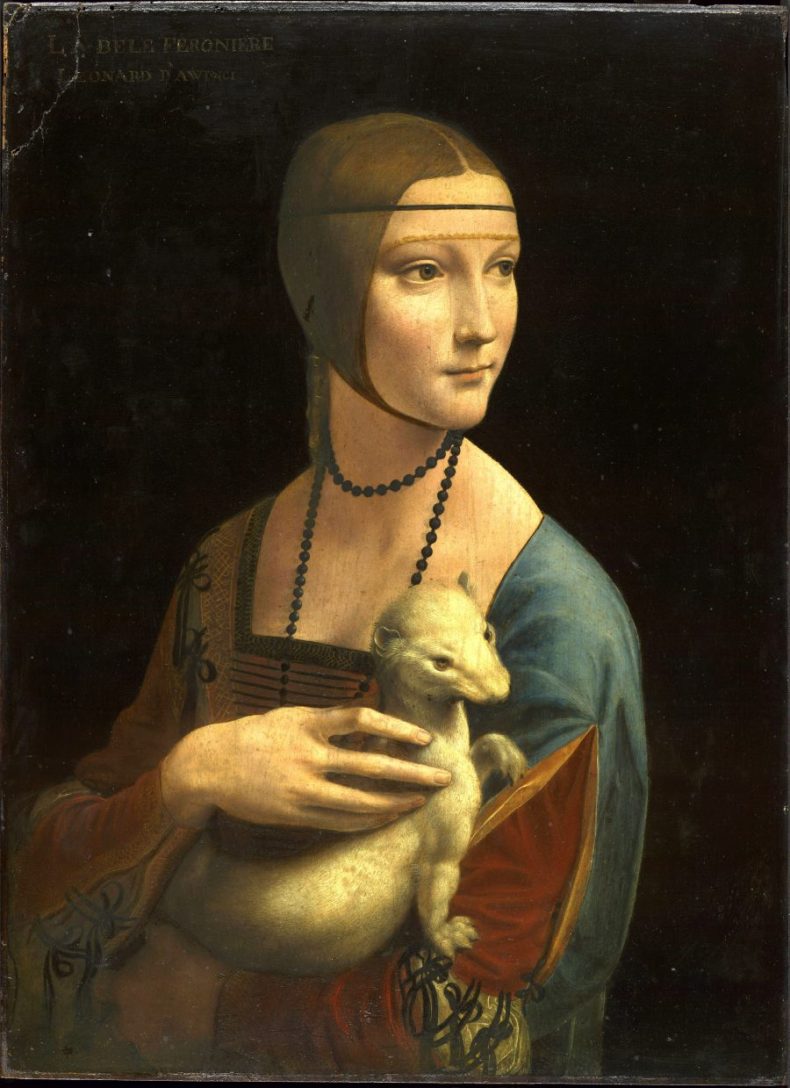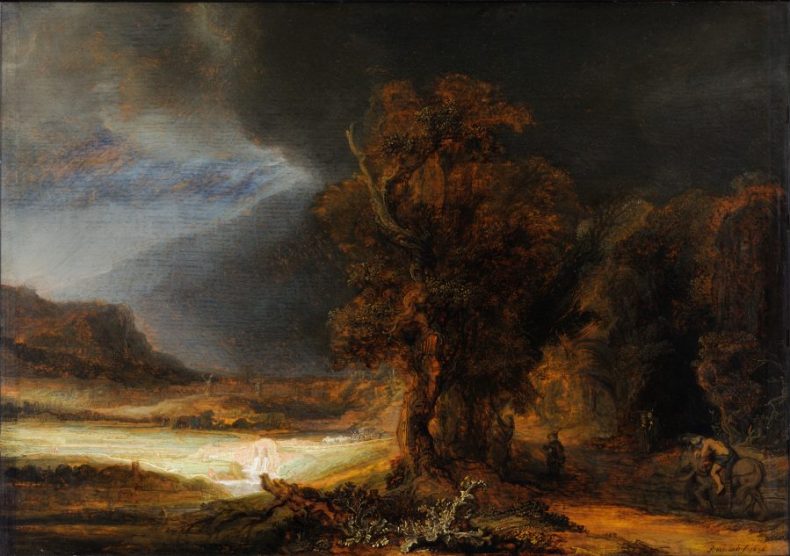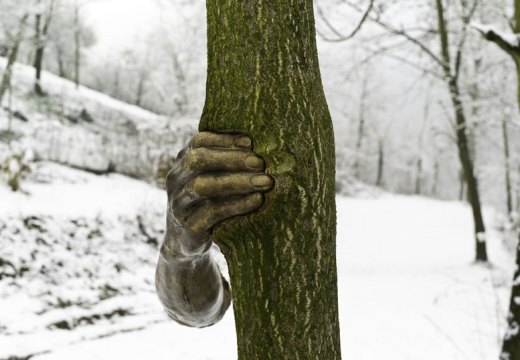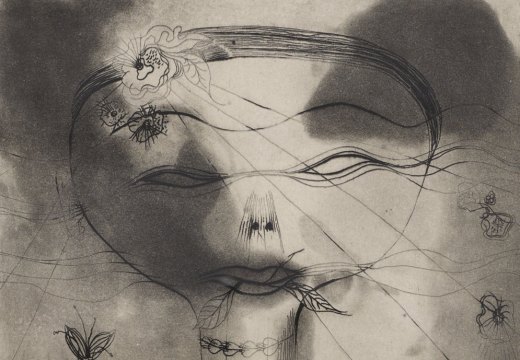Seven years ago, the Princes Czartoryski Museum in Kraków closed its doors as part of its plans for a far-reaching renovation. The museum, which consists of a picturesque cluster of buildings linked by a ‘Bridge of Sighs’, had been enjoying increasing visitor numbers as Kraków shook off its Cold War-era slumber and the city began to emerge as a tourist destination. The plans included covering a disused courtyard with a glass and steel roof – a project that owed something to the transformation of the British Museum in 2000. The roof was installed relatively swiftly, yet as 2016 drew to a close the museum showed no sign of reopening and at least 30 million złote (€6.9 million) was still needed to finish the job.
Then in mid December 2016 the museum’s entire managerial board resigned. It released a statement declaring that the head of the family, Prince Adam Karol Czartoryski, had lost their ‘trust’, as he had gone over their heads and was trying to sell the collection and the buildings that housed it to the Polish state. On 29 December, the 76-year-old prince, whose ancestors played a prominent role in the country’s history, signed an agreement with the Polish minister of culture Piotr Gliński, in which the collection of 86,000 works of art and a library of 250,000 items would pass into state hands for €100 million. Given that the treasures include one of only a handful of Leonardo’s surviving oil paintings, as well as a Rembrandt, and scores of incunabula, it seemed like a tremendous bargain for the buyer. The prince and a hastily assembled new board hailed the sale as a donation.
Criticism of the agreement has been fierce. Some observers think that the sale was unnecessary, and that the funds used for its purchase would be better spent on Polish heritage sites that are genuinely threatened. Critics are also sceptical about the rumours that an unnamed Middle Eastern buyer was on the brink of buying the collection and taking it out of the country: Poland’s rigid heritage laws forbid objects of any significant value that are older than 50 years from leaving the country without authorisation from the state. The laws regarding pieces classed as especially important for Polish heritage are even more stringent. The Czartoryski collection undoubtedly falls into both categories.

The Princes Czartoryski Musuem in Kraków, which was sold to the Polish state in December 2016. Photo: Mkos/Wikicommons
The holdings of the Princes Czartoryski Museum are an eccentric and appealing mixture of Old Masters and Polish and international curiosities. On past visits, I often had the sensation of being enveloped in a beguiling time warp. For example, hand-painted wooden labels in Polish and French accompany the pieces on display. Celebrated oil paintings co-existed with Ancient Egyptian sarcophagi, while Meissen figures of moustachioed Polish noblemen posed beside spoils from the 1683 Relief of Vienna, a victory commanded by King Jan Sobieski. In some ways, the less distinguished parts of the collection seemed only to enhance the museum’s distinct charm. Some of the portraits of the Czartoryski family are poorly executed and seem suited to one of M.R. James’s ghost stories; the provenance of a chair that is meant to have belonged to Shakespeare (displayed next to Captain Cook’s cutlass), seems rather doubtful. Yet such items – and the way in which they are displayed – have a value in themselves, demonstrating the intellectual outlook of Princess Izabela Czartoryska (1746–1835), the founder of the collection, which was the first private collection in Poland to be housed in a museum.
However, although the thick walls and polished wooden cabinets exuded a reassuring air of continuity, the history of the collection, like that of Poland, is more fraught. In the late 18th century, Poland was gradually carved up by Russia, Austria, and Prussia. When Izabela Czartoryska began to display her art collection in 1801, she did so partly in response to this dismemberment. Her country home, in Puławy (about 80 miles southeast of Warsaw), was now in Russian territory and her intention was to conjure Poland’s past greatness and nurture patriotic sentiments. An anti-Tsarist armed insurrection in 1830 meant that the collection had to be spirited away to Paris for safekeeping. It was only in 1878 that the collection was finally put on display by the family in Kraków, now part of the Austro-Hungarian Empire; the Habsburgs granted their Polish subjects significant autonomy. Poland reappeared as a state in 1918, and the museum continued to function as a privately-owned institution and was open to the public up until the outbreak of the Second World War.

Lady with an Ermine (detail), (c. 1489–90), Leonard da Vinci. Princes Czartoryski Museum, Kraków. Courtesy National Museum in Kraków
On 26 April 1946, a train pulled out of Nuremberg station, bound for Poland. Guarded by American soldiers, the carriages were filled with artworks that had been looted from Polish collections and later recovered in various German castles, mines, and shelters by a team of Polish art historians. Among the many treasures on the train was the jewel in the crown of the Czartoryski collection, Leonardo’s Lady with an Ermine (c. 1489–90). The owner of the painting, the 38-year-old Prince Augustyn Czartoryski, father of the current prince Adam Karol, was not in Kraków to receive the work. He had managed to reach Spain in 1939 with his wife, an aunt of the future King Juan Carlos. Adam Karol Czartoryski was brought up in Spain. He was six years old when his father died, just months after the Leonardo returned to Poland. He remained with his Spanish mother, cut off from his Polish roots. He has one daughter but no son. There are still many Czartoryskis at large, but it appears that the next head of the family will be a distant cousin.
The war ended with the Red Army’s occupation of Poland and by 1946, all Polish landed estates greater than 50 hectares had been confiscated. A Moscow-backed communist regime would ultimately hold power until 1989. The Polish ministry of culture estimates that the country lost 70 per cent of its cultural heritage during the war. Raphael’s Portrait of a Young Man (c. 1514), which passed out of the Princes Czartoryski Museum and through the hands of Hans Frank, the governor of the majority of Nazi-occupied Poland, remains untraced, together with over 800 other pieces from the collection. Somewhat miraculously, the lion’s share of the Czartoryski collection survived the war, and the museum became a branch of the National Museum in Kraków. After the fall of the Iron Curtain the Czartoryski family reclaimed the collection, in 1991. Yet although the collection passed into private ownership, the National Museum continued to administer the holdings, fund its day-to-day upkeep, and rent the buildings from the newly established Czartoryski foundation.
Fifteen years later when Poland’s economy was strengthening, it was rumoured that the Czartoryski foundation was changing its strategy and moving towards a break with the National Museum. The renovation programme began in 2010. In spite of funding from the Norway Grants scheme, as well as Polish regional and state authorities – and money raised by controversial international loans of the fragile Lady with an Ermine – the foundation ran out of money to finish the works. As a result of the December 2016 agreement, the National Museum in Kraków will run the institution once more.
‘It would have been a very beautiful thing to have continued with the Czartoryski foundation as the owner of the collection, and for it to be an independent museum, but the problem was that the foundation had no money to keep the museum,’ says Professor Jan Ostrowski, sometime member of the museum’s council, and director of the Wawel Royal Castle state museum since 1989. ‘So help from the government was absolutely necessary,’ he adds. ‘It is not easy to spend quite a lot of money on an institution that is not state-owned.’
Dr Andrzej Betlej, who was chosen as the new director of the National Museum in Kraków after the retirement of his long-serving predecessor Zofia Gołubiew, will oversee the next phase. He was appointed just before Poland’s populist Law and Justice party won the October 2015 general election. He estimates that the museum will reopen in 2019, with the remaining money most probably coming from a combination of EU funds and the Polish Ministry of Culture. As discussions about the financing mechanism are ‘ongoing’, he is reluctant to be more specific at the moment. Nevertheless, anyone who knew the museum in its previous incarnation may be heartened to hear that he hopes to recapture its old spirit. ‘We plan for a large portion of the exhibition to draw strongly on the one we knew before the closing of the palace – with the old cabinets echoing the arrangement of even prior to the Second World War,’ Betlej tells me. ‘We very much want to recreate the extraordinary character of the décor, and the mood. But it’s worth bearing in mind that after the reconstruction works have been completed, the exhibition space will be larger by a third. So there will be an opportunity to exhibit in a contemporary fashion – for example in the painting gallery. In this respect, I would say that the closest parallel is London’s Wallace Collection, which deftly combines tradition with modernity,’ he explains.

Landscape with the Good Samaritan (1638), Rembrandt von Rijn. Princes Czartoryski Museum, Kraków. Courtesy National Museum in Kraków
While it appears the Second World War and the communist era that followed have consigned the private status of several Polish museums to history, a few foundations run by historic families do still exist. One such example is the Lanckoroński Foundation, whose current chairman Piotr Piniński was raised in the UK. Piniński argues that the hasty changes to the foundation’s statute, which was altered to pave the way for the deal with the ministry of culture, sets a dangerous precedent. ‘There is now no assurance,’ he says, ‘that a donor to any foundation or museum can feel secure that a donation will remain in the recipient institution for which it is intended, if statutes can be changed by courts overnight under government pressure.’ Furthermore, families who had placed items in museums as deposits, rather than donations, have likewise been presented with a quandary. ‘A lot of deposits were made just before the outbreak of the Second World War, as at that time, families felt that collections would be safer in public museums. After the fall of the Iron Curtain, many such families refrained from removing those deposits, often motivated by a desire to be seen to be doing some form of public good. Yet given that the state has now provided an example of paying for collections, should not those remaining families be duly compensated?’
Meanwhile, there are questions as to whether the €100 million spent on buying the Czartoryski collection might not have been better spent on other causes. Pininski says, ‘Such money could have been used to acquire great works of art from abroad to enlarge the collections of existing domestic museums, so depleted by the ravages of war, thus increasing their appeal to local and foreign visitors alike, with the obvious long-term benefits.’
A great deal of good cultural work has been done in Poland since 1989, with a huge increase in sums spent on heritage. However, one does not have to venture far to see that the wounds of the Second World War and the communist era are still open. It is thought that 20,000 manor houses stood on pre-war Polish territory. Today, within the country’s current borders, a fraction of that number still stand and only a few dozen are inhabited by descendants of pre-war owners. In village after village one encounters derelict manor houses in dire need of restoration. One hundred million euros could have helped to save some of these buildings. Such edifices, most of which do not even have claimants, might be used to benefit a given locality. Marta Tarabula, the founder of the Zderzak Gallery, a contemporary art gallery, managed to buy back her grandfather’s crumbling mid 19th-century manor house near Kraków. She regrets the sale of the Czartoryski collection. ‘I have always been of the opinion that the aristocracy should do something for the nation, and the Czartoryski family was a very good example of this,’ she says. ‘With the sale of the collection, this has ended. We have a triumph of democracy over aristocracy,’ she adds with a touch of irony.
For better or worse, the collection has passed into state hands. This July, Kraków will host the UNESCO World Heritage Session. In recent years Poland has received more European funding for culture than any other EU country. Yet the current government has been on a collision course with the EU for some time over its efforts to reform Poland’s Constitutional Court. The government argues that changes are necessary, owing to last-minute moves by the previous government before the 2015 general election. Critics – including the European Commission and a large majority in the European Parliament – claim that the Law and Justice-led government has violated the rule of law and judicial independence. Given that Poland has allies in the Visegrad Group (Hungary, Slovakia, the Czech Republic) and the UK, it is unlikely that there will be sanctions, including those relating to funding for cultural sites, as such a move is likely to be vetoed by
these countries.
It is a commonly expressed view by members of the Polish intelligentsia today that both the ruling party and the opposition parties are behaving like embittered children. The senate of Poland’s oldest university, the Jagiellonian in Kraków, expressed similar sentiments in January, when it passed an unprecedented resolution calling on all parties to resume ‘civilised debate’. The government has promoted its purchase of the Czartoryski collection as a patriotic move that ensures its safety for the nation. Yet there are wider questions about where state-promoted patriotism is leading. The University of Warsaw’s Historical Institute issued a statement, also in January, criticising the government’s newly drafted curricular programme for history in schools, arguing that ‘history is neither a collection of patriotic episodes nor a gallery of heroes’. While the Princes Czartoryski Museum was itself inspired by patriotic impulses, the family was decidedly cosmopolitan and its collection, with treasures culled from across Europe and beyond, reflects this diversity.
From the March issue of Apollo. Preview and subscribe here.
Unlimited access from just $16 every 3 months
Subscribe to get unlimited and exclusive access to the top art stories, interviews and exhibition reviews.














![Masterpiece [Re]discovery 2022. Photo: Ben Fisher Photography, courtesy of Masterpiece London](http://www.apollo-magazine.com/wp-content/uploads/2022/07/MPL2022_4263.jpg)
It’s time for the government of London to return to its rightful home